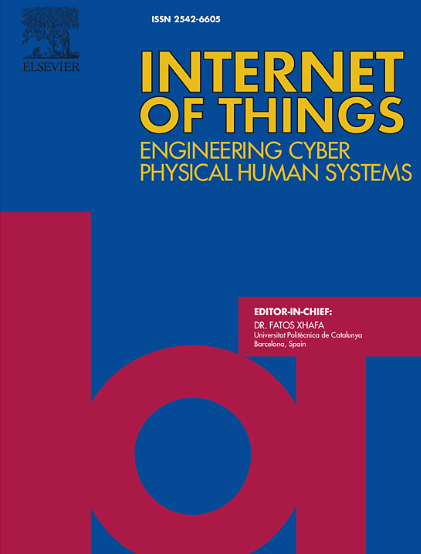Visual-based obstacle avoidance method using advanced CNN for mobile robots
IF 6
3区 计算机科学
Q1 COMPUTER SCIENCE, INFORMATION SYSTEMS
引用次数: 0
Abstract
Artificial intelligence is one of the key factors accelerating the development of cyber-physical systems. Autonomous robots, in particular, heavily rely on deep learning technologies for sensing and interpreting their environments. In this context, this paper presents an extended MobileNetV2-based obstacle avoidance method for mobile robots. The deep network architecture used in the proposed method has a low number of parameters, making it suitable for deployment on mobile devices that do not require high computational power. To implement the proposed method, a two-wheeled non-holonomic mobile robot was designed. This mobile robot was equipped with a Jetson Nano development board to utilize deep network architectures. Additionally, camera and ultrasonic sensor data were used to enable the mobile robot to detect obstacles. To test the performance of the proposed method, three different obstacle-filled environments were designed to simulate real-world conditions. A unique dataset was created by combining images with sensor data collected from the environment. This dataset was generated by adding light and dark shades of red, blue, and green to the camera images, correlating the color intensity with the obstacle distance measured by the ultrasonic sensor. The extended MobileNetV2 architecture, developed for the obstacle avoidance task, was trained on this dataset and compared with state-of-the-art low-parameter Convolutional Neural Network (CNN) models. Based on the results, the proposed deep learning architecture outperformed the other models, achieving 92.78 % accuracy. Furthermore, the mobile robot successfully completed the obstacle avoidance task in real-world applications.
基于视觉的移动机器人避障方法
人工智能是加速网络物理系统发展的关键因素之一。特别是自主机器人,严重依赖深度学习技术来感知和解释其环境。在此背景下,本文提出了一种扩展的基于mobilenetv2的移动机器人避障方法。该方法所采用的深度网络架构参数数量少,适合部署在对计算能力要求不高的移动设备上。为实现该方法,设计了一种两轮非完整移动机器人。这个移动机器人配备了Jetson Nano开发板,以利用深度网络架构。此外,利用相机和超声波传感器数据使移动机器人能够检测障碍物。为了测试该方法的性能,设计了三种不同的充满障碍物的环境来模拟现实世界的条件。通过将图像与从环境中收集的传感器数据相结合,创建了一个独特的数据集。该数据集是通过在相机图像中添加红色、蓝色和绿色的明暗色调,将颜色强度与超声波传感器测量的障碍物距离相关联而生成的。为避障任务开发的扩展MobileNetV2架构在该数据集上进行了训练,并与最先进的低参数卷积神经网络(CNN)模型进行了比较。结果表明,所提出的深度学习架构优于其他模型,准确率达到92.78%。在实际应用中,该移动机器人成功地完成了避障任务。
本文章由计算机程序翻译,如有差异,请以英文原文为准。
求助全文
约1分钟内获得全文
求助全文
来源期刊

Internet of Things
Multiple-
CiteScore
3.60
自引率
5.10%
发文量
115
审稿时长
37 days
期刊介绍:
Internet of Things; Engineering Cyber Physical Human Systems is a comprehensive journal encouraging cross collaboration between researchers, engineers and practitioners in the field of IoT & Cyber Physical Human Systems. The journal offers a unique platform to exchange scientific information on the entire breadth of technology, science, and societal applications of the IoT.
The journal will place a high priority on timely publication, and provide a home for high quality.
Furthermore, IOT is interested in publishing topical Special Issues on any aspect of IOT.
 求助内容:
求助内容: 应助结果提醒方式:
应助结果提醒方式:


